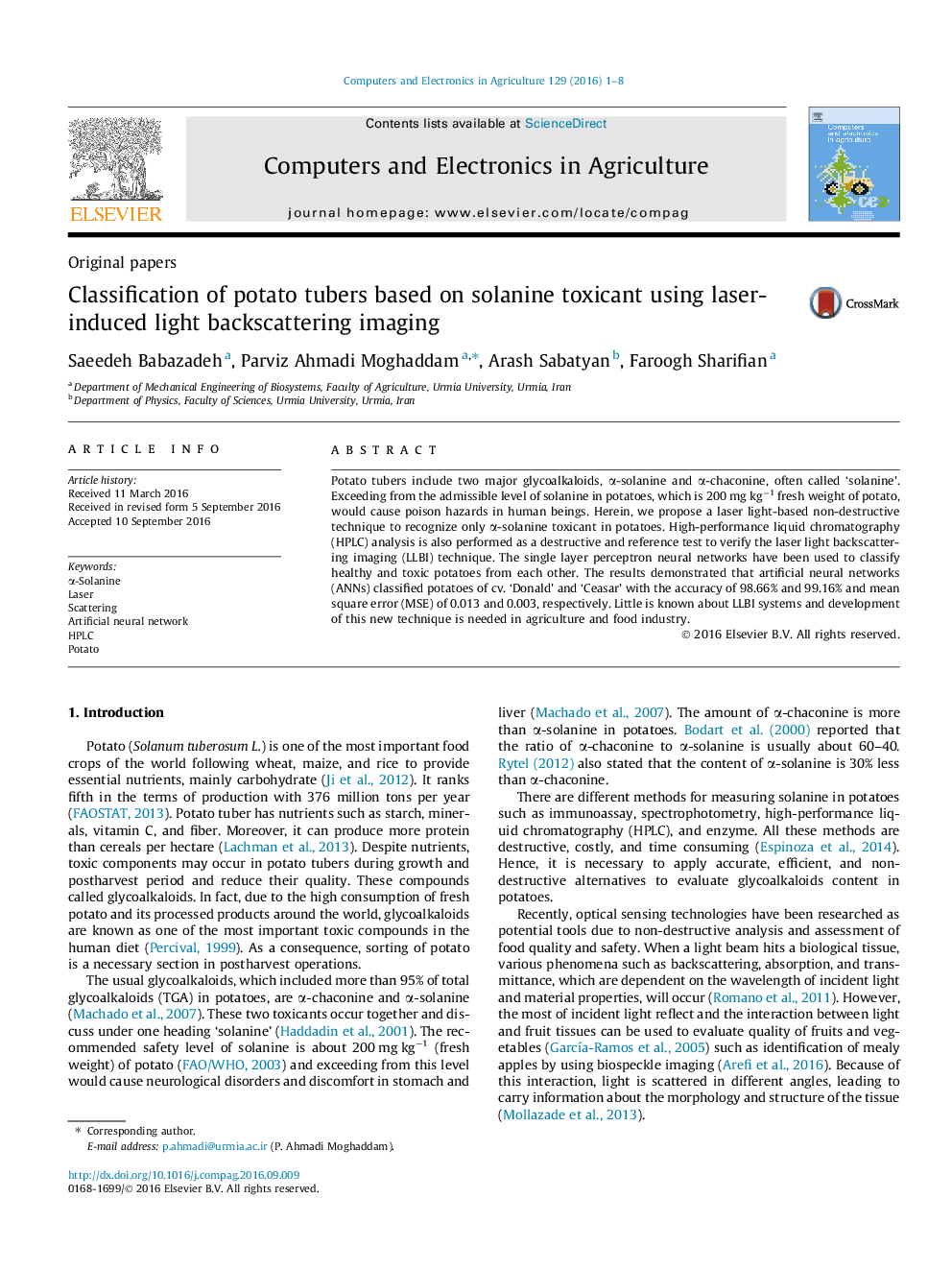| Article ID | Journal | Published Year | Pages | File Type |
|---|---|---|---|---|
| 4759232 | Computers and Electronics in Agriculture | 2016 | 8 Pages |
Abstract
Potato tubers include two major glycoalkaloids, α-solanine and α-chaconine, often called 'solanine'. Exceeding from the admissible level of solanine in potatoes, which is 200 mg kgâ1 fresh weight of potato, would cause poison hazards in human beings. Herein, we propose a laser light-based non-destructive technique to recognize only α-solanine toxicant in potatoes. High-performance liquid chromatography (HPLC) analysis is also performed as a destructive and reference test to verify the laser light backscattering imaging (LLBI) technique. The single layer perceptron neural networks have been used to classify healthy and toxic potatoes from each other. The results demonstrated that artificial neural networks (ANNs) classified potatoes of cv. 'Donald' and 'Ceasar' with the accuracy of 98.66% and 99.16% and mean square error (MSE) of 0.013 and 0.003, respectively. Little is known about LLBI systems and development of this new technique is needed in agriculture and food industry.
Related Topics
Physical Sciences and Engineering
Computer Science
Computer Science Applications
Authors
Saeedeh Babazadeh, Parviz Ahmadi Moghaddam, Arash Sabatyan, Faroogh Sharifian,
